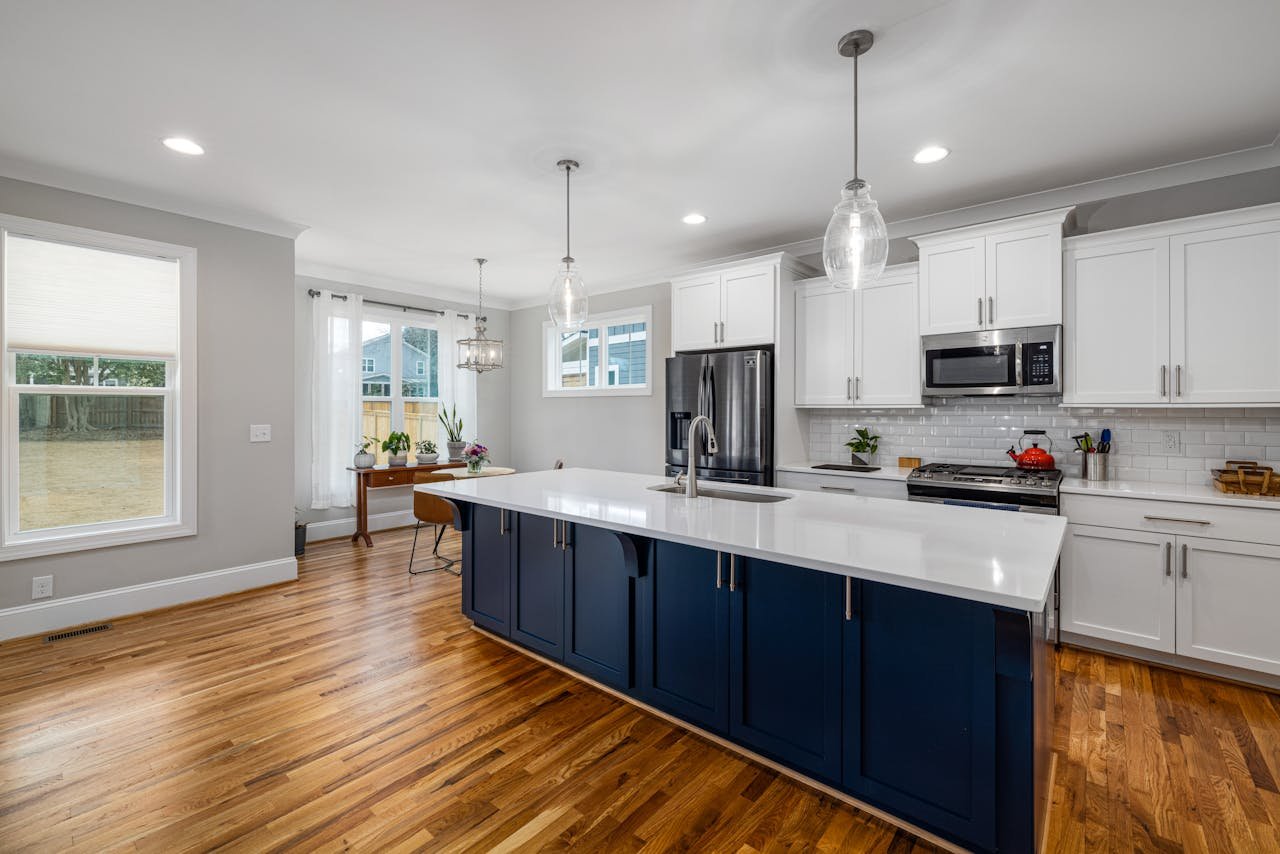How Long Does a Kitchen Remodel Take? | Timeline & Key Factors
Remodeling a kitchen can be the most exciting upgrade you make to your home. But before you swing the first hammer, you’ll want to answer a crucial question: How long does a kitchen remodel take?
Whether you’re handling small cosmetic updates or planning a head-to-toe transformation, understanding the timeline helps you set realistic expectations and avoid frustration down the road.
This guide breaks down the factors that affect kitchen remodel timelines, outlines typical project durations, and offers expert-backed tips to ensure your renovation runs as smoothly as possible.
Why Does a Kitchen Remodel Timeline Matter?
The kitchen is the heart of your home. Knowing how long you’ll be without it helps you:
- Plan your temporary cooking arrangements.
- Synchronize schedules with work, school, and holidays.
- Avoid unnecessary stress or costly delays.
Most importantly, realistic timelines protect your investment, ensuring that quality and craftsmanship never get replaced by rushed decisions.
Factors That Affect How Long a Kitchen Remodel Takes
No kitchen remodel is exactly the same. Your timeline will depend on a unique mix of choices, circumstances, and (sometimes) surprises. Here’s what most influences how long your remodel will take:
Scope of the Project
- Cosmetic updates: These include painting, changing hardware, and maybe replacing some fixtures or appliances. Minimal construction involved.
- Full renovation: Changes to cabinets, layout, plumbing, and electrical work; may require permits and professional inspections.
- Structural changes: Knocking down walls, expanding the footprint, or completely reconfiguring the layout can add significant time and complexity.
Planning and Design Phase
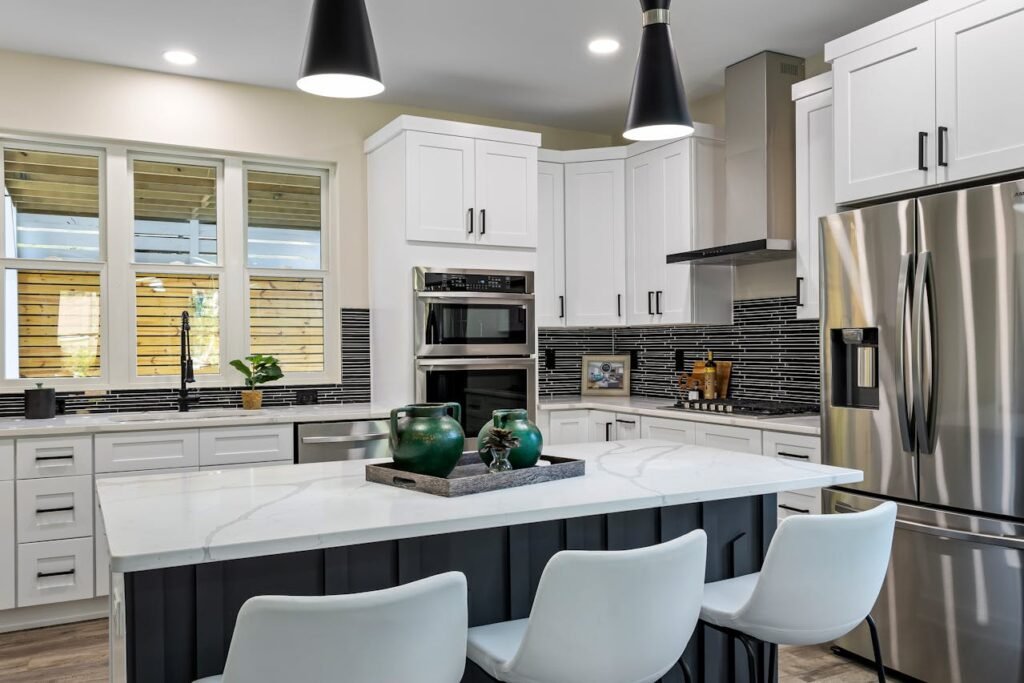
- Time for design: Collaborating with a designer, selecting materials, and finalizing plans often takes several weeks to months. This step is essential for accurate budgeting and avoiding mid-project changes.
- Appliance selection: Appliances impact the layout and cabinet dimensions. Decide early and stick with your choices to prevent delays.
Material and Product Orders
- Lead times: Custom cabinets and special-order materials can take 8–12 weeks to arrive. Standard or in-stock options will be quicker.
- Supply chain delays: Industry-wide shortages or shipping issues may unexpectedly extend wait times.
Subcontractor Availability and Labor Shortages
- Skilled trades like electricians, plumbers, and finish carpenters are sometimes booked months in advance.
- Overlapping schedules and waiting for inspections can result in bottlenecks.
Changes to Project Scope
- Last-minute changes almost always cause delays. Altering cabinet styles or layouts after orders have been placed may push your project back by weeks.
Communication with the Team
- Open lines of communication with your designer and contractor keep everyone aligned and prevent misunderstandings that stall progress.
Inspections and Permits
- Permits and required inspections are often non-negotiable for projects involving plumbing, electrical, or structural changes. Scheduling and passing these can add days or even weeks to your timeline.
Key takeaway: The more complex your remodel, the more factors can impact timing. Sticking to your plan is the best way to keep things on track.
Typical Kitchen Remodel Timeline Breakdown
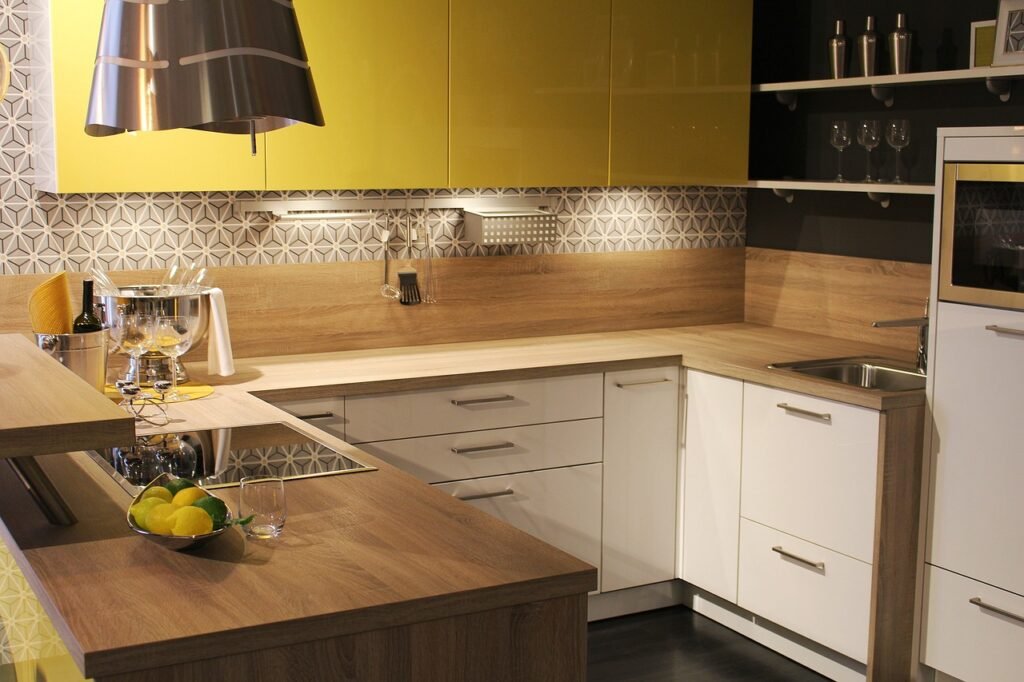
To set proper expectations, here’s how long the main types of kitchen remodels usually take:
Small Cosmetic Updates
Estimated Duration: 1–3 weeks
These projects include:
- Painting walls or cabinetry
- Updating hardware (handles, faucets, lighting)
- Swapping old appliances for comparable new ones
No major construction = speedy results.
Regular Kitchen Renovation
Estimated Duration: 6–12 weeks
Most medium-sized renovations involve:
- Replacing cabinets and countertops
- Updating appliances
- New flooring and lighting
- Minor electrical or plumbing work
Design, order, demolition, and finishing all take time. Expect the project to stretch toward the longer end if you choose custom features or run into material delays.
Full Kitchen Renovation with Structural Changes
Estimated Duration: 3–5 months (sometimes more)
If you’re taking down walls, moving plumbing or gas lines, or expanding your kitchen, plan for a much longer disruption. Securing permits, coordinating large teams of subcontractors, and waiting on inspections and custom orders all factor in. The planning and design stage is especially critical at this scale.
Stages of a Kitchen Remodel (and How Long Each Takes)
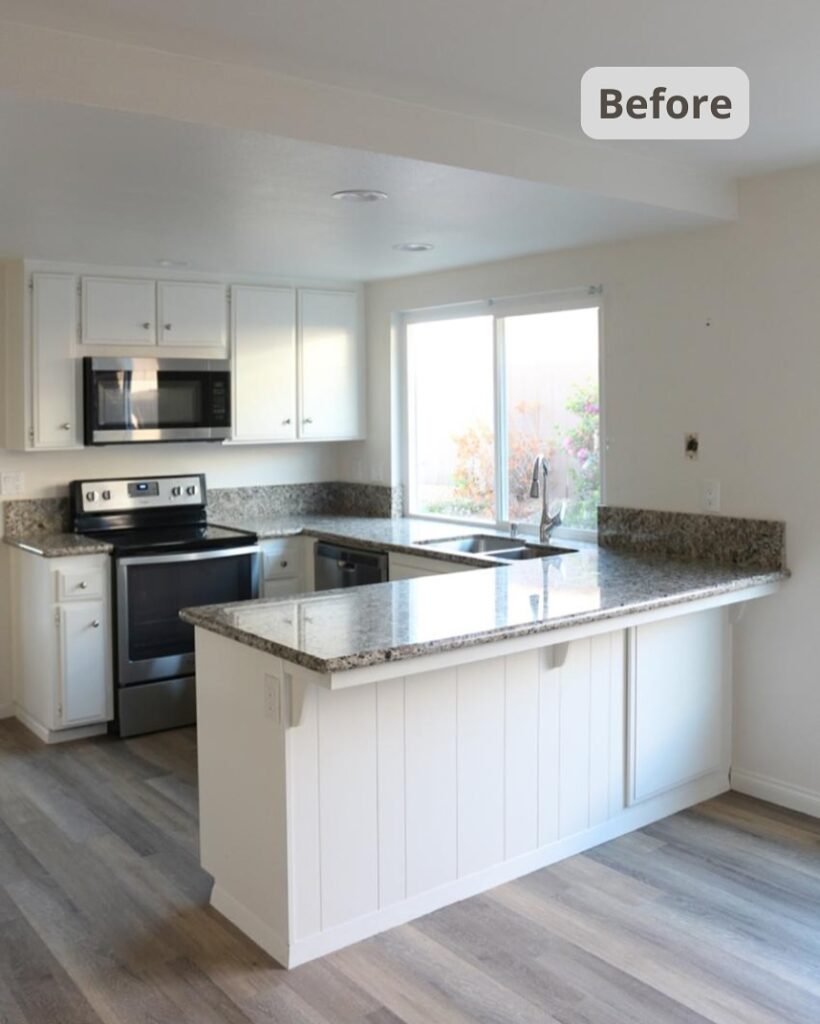
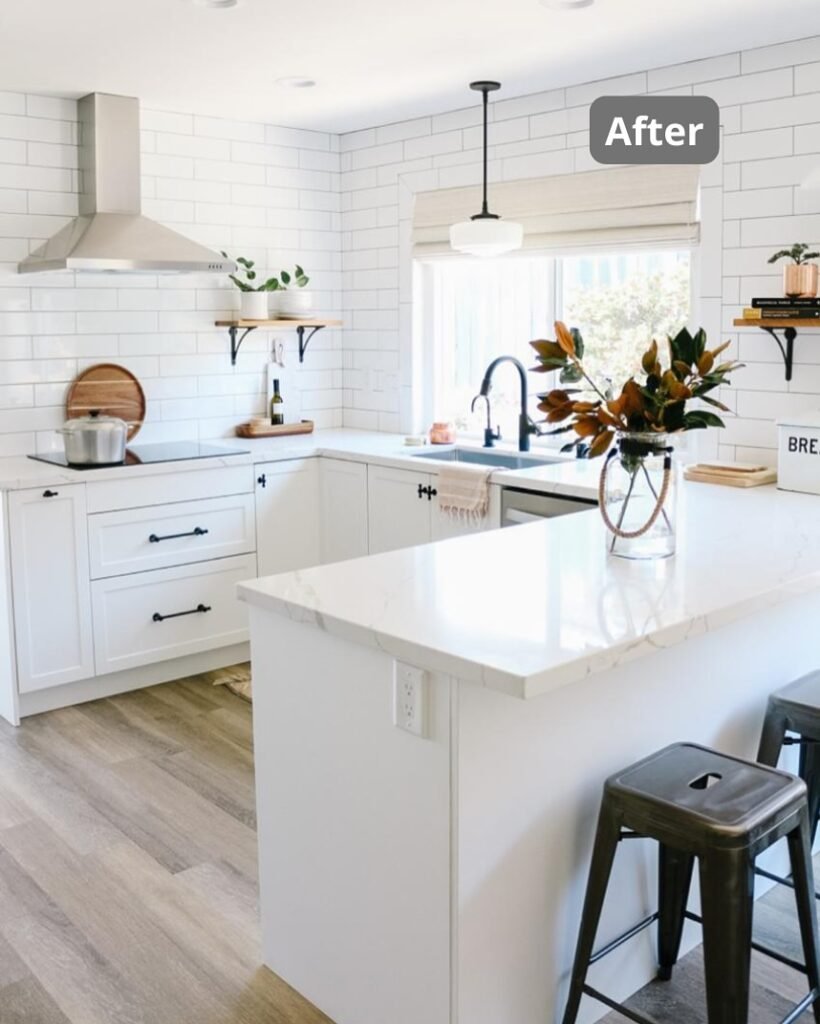
A kitchen remodel is a big undertaking, but breaking it into stages can make the process manageable. Here’s a detailed look at what most projects involve, step by step:
1. Planning Stage (2–3 Months)
This phase is all about preparation and decision-making, which sets the foundation for the entire remodel.
- Design Meetings: Collaborate with design professionals to outline your vision, layout, and budget.
- Material Selection: Choose cabinetry, countertops, flooring, lighting, and appliances. This is your chance to personalize your design.
- Gathering Bids: Contact contractors, request quotes, and compare pricing.
- Ordering Materials: This includes custom cabinets, specialty countertops, and appliances, which can take weeks to arrive.
- Securing Permits: Work with your contractor to navigate local regulations and obtain necessary permits.
- Scheduling Teams: Coordinate schedules for contractors, electricians, plumbers, and other professionals.
Tip: Thorough planning minimizes surprises and delays during construction, so invest time in getting this right.
2. Demolition Stage (1–2 Weeks)
This is where the old kitchen is dismantled to make way for the new. Be prepared for noise and disruption during this phase.
- Tearing Out Old Components: Remove cabinets, countertops, appliances, flooring, and, if necessary, walls.
- Debris Removal: Haul away materials to keep the workspace clear and organized.
Tip: Protect adjacent areas from dust with plastic sheeting or barriers, and plan for temporary kitchen alternatives like a microwave or outdoor grill.
3. Rough-In Stage (1–2 Weeks)
This stage focuses on the behind-the-scenes essentials that make your kitchen functional.
- Installing New Systems: Update plumbing, electrical, and HVAC lines to accommodate your new layout and appliances.
- Framing Adjustments: Prepare for elements like islands, sinks, or new appliance configurations.
Tip: This is the critical stage where everything hidden behind the walls is addressed, so ensure it’s done correctly to avoid future problems.
4. Inspection Stage (1–2 Days)
This is a quick but essential step to ensure all mechanical, electrical, and structural work complies with local codes.
- Inspections: City or county inspectors will review the work completed during the rough-in stage.
- Approvals: Once everything passes inspection, you’re cleared to move to the finishing phase.
Tip: Work with qualified tradespeople who understand local codes to avoid failing inspections, which can cause delays and additional costs.
5. Finishing Stage (2–3 Months)
The final and most exciting stage! This is when your vision becomes reality, but it’s also the most detail-oriented part of the process.
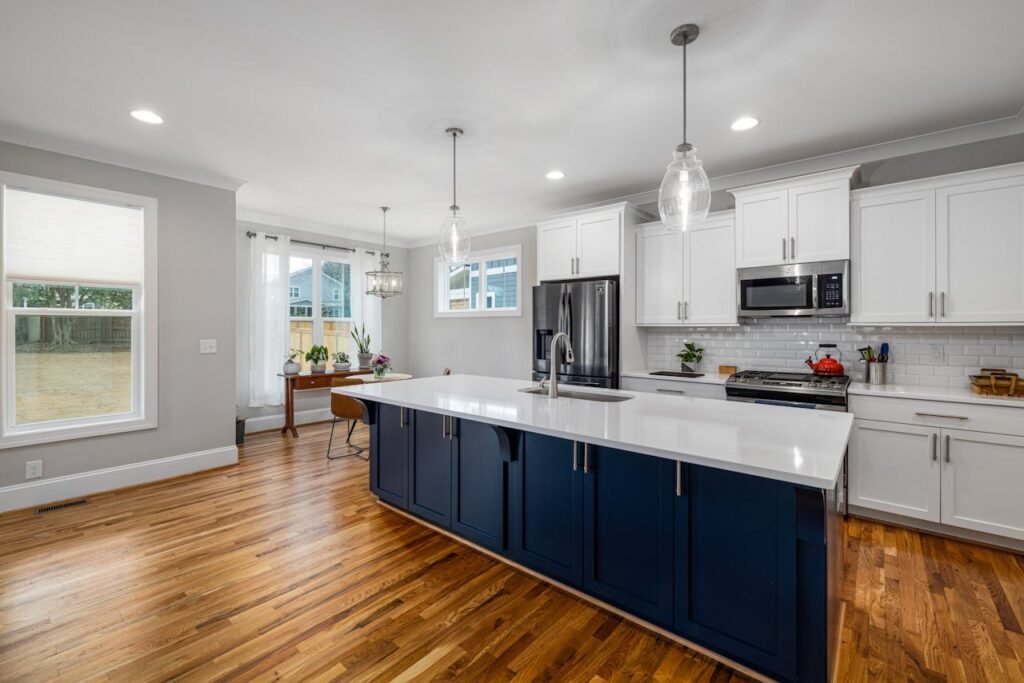
- Cabinet Installation: Mount custom or pre-made cabinets, ensuring proper alignment and spacing.
- Countertops and Appliances: Fit countertops, sinks, and install your new appliances.
- Flooring and Tiling: Lay flooring and complete backsplash or wall tiling.
- Painting and Lighting: Add finishing touches with paint and lighting fixtures that complement your design.
- Hardware and Final Details: Install knobs, handles, and other finishing flourishes.
- Final Walkthrough: Review the work with your contractor and create a punch list of any remaining fixes.
Note: Custom cabinetry or intricate tiling can extend this stage, so allow flexibility in your timeline.
Tip: Patience is key in the finishing stage. Letting each step be completed thoroughly ensures a polished final result.
Tips to Expedite Your Kitchen Remodel
Want to reduce headaches and speed things up? Use these proven strategies:
- Set a clear, realistic budget first. This helps prevent change orders and keeps the project moving forward.
- Place all material and product orders early. Waiting on items is the single biggest cause of delays.
- Provide your team with ALL product specs before demolition. Cabinets are measured to fit appliances, not the other way around.
- Maintain open, consistent communication. Regular check-ins with your contractor and designer help solve issues before they become delays.
- Stick to your plan. Last-minute scope changes lead to order rework and extra labor time.
- Choose materials that are readily available. Opt for in-stock selections during times of supply-chain uncertainty.
- Schedule work during less busy times. Contractors may have shorter lead times during their “off-season”.
Following these steps won’t guarantee a totally hiccup-free experience, but they’re your best bet for staying close to your original timeline.
Conclusion
DIY shows and before-and-after photos can make kitchen remodeling look quick and easy. The reality? Life without a working kitchen, even for a few weeks, can be challenging.
The key is to plan for a longer time frame than you think you need, accounting for permits, material delays, and unforeseen issues.
If you’re still unsure about your timeline, work closely with an experienced contractor and ask them for recent, real-world examples of kitchen remodel projects similar to yours. The ultimate goal is a kitchen you’ll love for years—not just a speedy finish.

